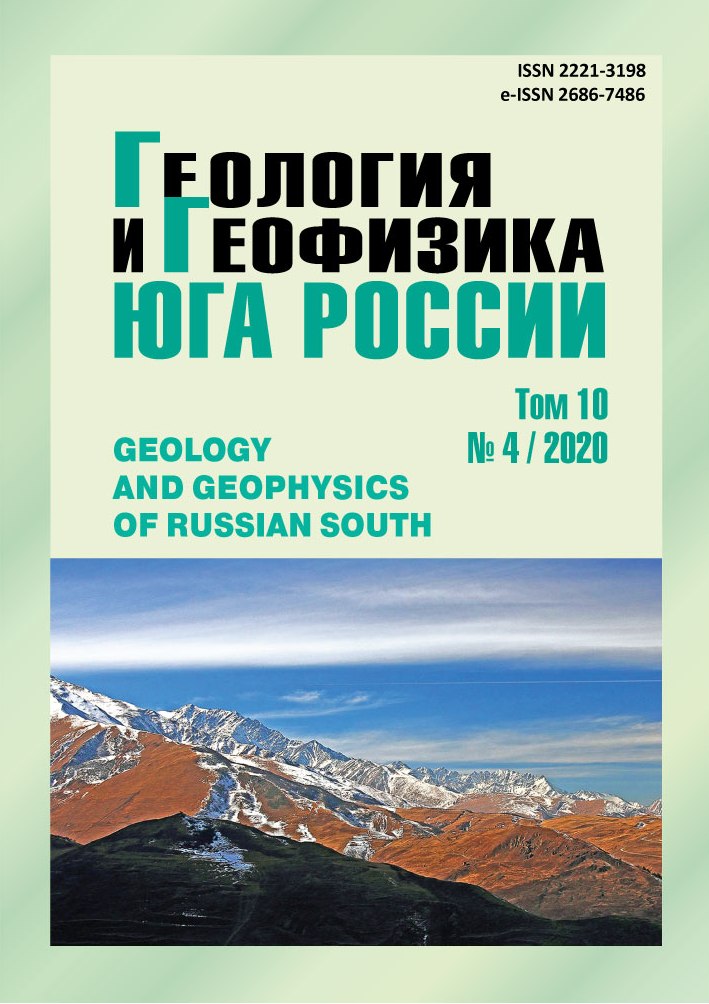On the Possibility of Detecting of Industrial EarlyMiddle Jurassic Polymetallic-Gold-Platinoid Mineralization of the Black-Shale Type in North Ossetia (Part 1)
Abstract
Relevance. The Article is devoted to the problem of identifying the nature and causes of platinumand palladienne gold deposits: 1) in Precambrian black shale and carbonaceous strata of the Central zone of the Northern Tien Shan; 2) in the Urals, where the industrial significant gold is associated with island-arc formation and complexes superimposed volcano-plutonic belts of active continental margin; 3) in the North-East of Asia and the Far East, where the sialic profile of magmatic melt generation areas, in general, caused their regional geochemical tin-noble metal specialization; 4) in the black-shale strata of the Timos type on the iron ore depositsgiants of the Kursk magnetic anomaly (KMA) and the Voronezh crystal massif (VCM) of Central Russia. The most important component of ferruginous quartzites of KMA, VCM and the deposits of rich iron ores formed on them in the upper-visean crust of weathering and giant industrial products of mining enterprises are precious metals, which have become one of the largest non-traditional sources of selective and associated gold and platinum mining of the XXI century; 5) in the North Caucasus in the Devonian black shales of the Bolshaya Laba river minerals of native platinum were discovered, their platinum-bearing properties and prospects for detecting industrially significant ore objects in them were established. The results of complex studies of Devonian black shales in the zone of the Advanced ridge of the North Caucasus have shown that there is a single ultrabasic source for both Au and Pt, Pd. Mineral forms of the platinoid group in black shales and igneous rocks are often established only by microprobe or electron microscopic studies. The aim of the research is to expand the mineral resource base of the southern Federal district of the Russian Federation for precious metals. Research methods – conducting targeted representative testing of ore bodies, their host rocks and tailings material within the Avsandur-Lamardon ore field and the Fiagdon tailings reservoir, and their subsequent analysis by quantitative methods (assay and ICP MS analyses) to determine the gold content. platinum and EPG. Results and discussion. Until 2019, it was believed that in the North Caucasus, only carbon-containing Devonian black shales were potentially ore-bearing for precious metals. However, during the mineralogical and geochemical studies with quantitative methods (XRF and ICP MS) of industrial waste of the Fiagdon tailing pond, processing ores of the Kakadur-Khanikom and Kadat-Khampaladag polymetallic deposits located in the strip of development of carbonaceous black mudstones of lower Jurassic age, was first revealed elevated concentrations (in g/t) precious metals: Au – 0.05 to 0.35; Pd – from 0.042 to 0.049; Pt – from 0.07 to 1.29. Analysis of 4 samples of mudstones from different parts of the section of the lower-middle Jurassic black mudstone thickness revealed variations in their content (in g/t): Pd – from 0.003 to 0.01; Pt – from 0.002 to 0.01; Au – from 0.01 to 0.05; Ag – from 0.01 to 1.87; P – from 522 to 788; Cr – from 84 to 94; V – from 141 to 156; Ni – from 13 to 48; Cu – from 56 to 157; Zn – from 79 to 132; Pb – from 567 to 2546; As – from 133 to 502; Ba – from 362 to 432, which strongly indicates the high metal content of the ore-bearing black-shale strata. The data obtained, with high probability, allow us to assume that within Avsandur-Lamardon field identified a new for the North Caucasus of the early-middle Jurassic black shale with precious-metal polymetallic type mineralization.


